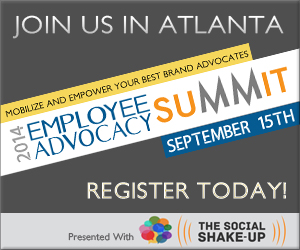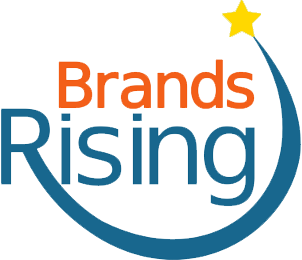 At the 2014 Employee Advocacy Summit in Atlanta this September, Liz Bullock will share lessons on training and making use of insights from data from her experience leading Dell’s employee advocacy program for 3 years. Below is a short interview I did with her at SXSW last Spring, where Liz shares valuable tips on how training and using insights from data are critical components to running an effective employee advocacy program.
At the 2014 Employee Advocacy Summit in Atlanta this September, Liz Bullock will share lessons on training and making use of insights from data from her experience leading Dell’s employee advocacy program for 3 years. Below is a short interview I did with her at SXSW last Spring, where Liz shares valuable tips on how training and using insights from data are critical components to running an effective employee advocacy program.
Susan Emerick: Hi, I’m Susan Emerick. I’m here with my guest Liz Bullock who has been a gracious contributor to our book, The Most Powerful Brand on Earth, where we cover a case study of the work Liz did when she was at Dell as Director of Social Media and Community. I’d like to talk with you about your experience there and how social media impacts every stage of the customer life cycle and how employee advocacy is a part of that.
Liz Bullock: Yes, absolutely Susan. It’s a true honor to be here. You and Chris (Boudreaux) did an amazing job on the book. When you look at how customers are buying today, it’s fundamentally changed. They’re basically going out and researching products beforehand, whether it’s B2B or B2C and they’re making decisions through their peers. Once they make those decisions, they’re expecting the brand to engage and thank them for their purchase and if something’s not right, they expect an immediate response, usually within an hour. Companies really need to think about social throughout the customer lifecycle and how are you activating employees to go out there and listen and learn from both customers and engage in peer to peer networks. Be a part of the conversation where it makes sense.
Susan Emerick: You’ve done a significant amount of work to establish the SMaCU (Social Media and Community University) training program at Dell. Would you please share more with us about that?
Liz Bullock: Yes, absolutely. So I was part of the Center of Excellence team and our focus was around how could we drive social media strategically into the business, as effective tool across HR, Sales, Product groups etc. So we began with training. Dell being a data company, in some ways we started with the data first. We said, let’s start by looking at what our customers are doing and what we found there was 10,000 conversations per day in English and this was 3 years ago. Then we said, employees are out there, what are they doing? So we started by looking at 400 employees across the board representing different parts of the organization – marketing, product group, and sales. We started to dig in and see what they were doing. Some were fantastic, really engaging with customers in really rich and authentic ways. But, there was a mid-section, where we saw an opportunity for these employees to be more savvy in how they had used social media. So we decided to launch a training program called SMaC University – it stands for Social Media and Community University. We basically opened it up to all employees, but there was a requirement that any employee engaged in social on behalf of Dell, had to be certified. The requirements went into our policy. What are the risks, what are the best practices with Dell’s strategies. what was Dell’s point of view on employees roles, and last thing was teaching them judgment. There’s a lot you can teach, but I think it’s important to share best practices and ensuring they are doing the right things.
Susan Emerick: It’s really interesting that you describe a data driven approach to employee advocacy and how you enabled employees at Dell. At IBM we’ve been transforming our marketing and communications function from social intelligence. Gathering data and adjusting our strategic approach based on insights that come from the data. I think this is a significant change as a marketing professional over the years, having been involved in marketing and communications myself since pre-internet days. I’m curious to know how you think data is changing your role.
Liz Bullock: There’s such a rich amount of data now. With social you can get more insights into customers likes and dislikes through sentiment. I just heard Sandy Carter (IBM) speak about how from 200 tweets you can see 52 personalities – that’s incredible data. As a brand, I think you need to leverage that information to really understand you customer and how to service them and support them. So I think it’s the data pieces that are fundamentally changing the way marketing and communications teams have to advance. I don’t know if they’re aware of that yet, but that change is coming and they’ll have to embrace it.
Susan Emerick: Thanks for being here today, Liz, and all of your contributions to the book.
